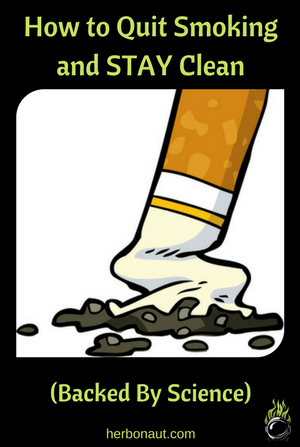
In today’s post, you’re going to learn the best and most proven ways to quit smoking.
Although a small percentage of people who quit smoking do so quite easily, the majority of people need a multi-disciplinary approach.
Here’s why:
Smoking addiction is not just an addiction. It consists of different types of addictions:
- The physical addiction to nicotine;
- The physical addiction to the act of smoking
- The psychological addiction to the act of smoking;
- The addictive nature of habits in general.
To successfully quit, you need to understand all these types of addictions and have a plan to deal with all of them.
Don’t look for a magic pill. If you want to successfully quit smoking, you need discipline and self-control.
The Greatly Sought-After Magic Pill to Quit Smoking
 Looking online, searching for methods to quit smoking, you’ll quickly find several ways which claim to do all the work for you.
Looking online, searching for methods to quit smoking, you’ll quickly find several ways which claim to do all the work for you.
Just take this pill, use this gum, get this therapy and you’ll be able to quit smoking effortlessly.
Is there such a magic pill that makes you quit smoking?
Short answer: no.
Anyone that believes that a multiple-year-old habit which habituated on a daily basis and is fully entrenched in your brain, is easily broken in a matter of days or weeks with some magical product is highly delusional.
Sorry, today’s post won’t be comforting, acting like a warm blanket covering you on a cold winter night, telling you that all will be well if you mindlessly use this or that product.
I want you to know the truth:
Quitting ANY longtime habit which habituated on a daily basis is going to take a serious amount of effort from you or such a strong mind-shift that you see no other option (like when you’re in a situation where it’s quit or die because of acute heart-attack risks).
It gets better:
There are methods, or better yet: a combination of methods and (psychological) tools, which are better suited for this task than others, and that will ease your journey significantly.
Plus, quitting smoking can be one of the most rewarding journey’s you’ll ever take:
Every single day without smoking will give a massive boost to your confidence and self-esteem.
Self-control indeed is one of the best ways to boost your confidence, self-esteem, and success in all the other areas of your life (1).
Now, let’s get to the first step and understand…
The Psychology Behind Quitting ANY Habit
 If you’re serious about giving up smoking, you’re going to have to take a multi-disciplinary approach, and this includes understanding the psychology of breaking any habit.
If you’re serious about giving up smoking, you’re going to have to take a multi-disciplinary approach, and this includes understanding the psychology of breaking any habit.
This is needed because any method that you use to quit smoking (vaping, nicotine gums, etc.) has to rest on a solid psychological foundation.
A longtime habit like smoking is entrenched in your neural pathways.
If you repeat a particular behavior, over and over again, it becomes part of your biology.
So, the first psychological rule you’re going to keep in mind is:
1. Quitting any habit takes a serious amount of conscious effort for a certain period.
Here’s why:
You are going to rewire your brain, and going to go against your biology.
Going against your own biological/psychological habits and desires is often a tough task.
This struggle will be highly personal…
You may find it easier than the next man, but at least mentally prepare for it, so you don’t get caught off guard.
The quicker you come to terms with this, the more successful you’ll be.
The second psychological rule you will use is:
2. You need to know the reason WHY you’re quitting smoking exactly.
There are several reasons for this rule, and the first one is the following:
It’s proven that a behavior change based on personal value is more effective than based on external demand (2).
Do it for yourself, respect yourself and your body. You deserve a healthy body and a healthy life!
But to do it for yourself, you need to know WHY you’re doing it exactly, and always keep the goal in mind when the going gets tough.
The second reason is that having a clear motivation is a critical part of influencing your subconscious and unconscious mind.
The goal here is to come to a point, where the habit of smoking is as good as being erased from your neural pathways or overwritten by a new behavior…
And here comes the critical part:
That the new habit continues to persist, even after conscious motivation and effort have weakened.
Because let’s be honest: your conscious motivation will weaken at some point…and before that, you want to have gotten to a place where quitting smoking has become part of your unconscious habits and behaviors.
For this, it also helps to get a clear and concise list of motivations on why exactly you want to break a particular habit (smoking).
To get to this list, here’s what I recommend you to do:
Write down your goal (“I am a healthy and smoke-free person,” for example).
I highly recommend you positively frame your goal and as if it’s already true as this is proven to be WAY more effective compared to framing it in a negative way of not doing something (“I am a smoke-free person” is better than “I will quit smoking”) (3).
Always focus on where you want to be, not on that which you want to avoid.
Then make a list of:
- All the positive effects that quitting smoking brings, and;
- A list of all the adverse effects that smoking brings.
And now comes the most crucial part:
You need to say out loud your goal and list of positive motivations every morning when you wake up and every evening when you go to bed, for at least 2 months.
This method is one of the most effective ways to influence your subconscious mind…and as much as I would have loved it to be otherwise…
Unless you’re enlightened, you’re for a large part controlled by your unconscious and subconscious mind (4). So, you NEED to do this.
The last psychological rule that’s going to help you is:
3. It’s much easier to replace an old habit with a new habit than to lose a habit.
Here’s why:
First of all, you can’t make a habit out of not doing something! A habit is an active behavior.
When did someone ever tell you:
“Every morning when I wake up I don’t drink coffee.”?
Probably never.
We don’t make habits out of not doing something.
So the solution here is: replace your old habit with a new one.
Secondly, one of the best ways to break a habit would be to remove you from the environment which triggers the habit you want to break.
When there are no environmental triggers around you, breaking a habit is 10 times easier.
Here’s why:
Triggers play a vital role in habit formation.
Unfortunately, the case with many habits like smoking is, that the environment which triggers you, is the day-to-day environment you’re living in…and; therefore, you can’t quickly get away from it.
Now:
Since the environmental triggers will be around you on a daily basis, especially when trying to quit smoking (friends, colleagues, parties, events, etc.) …
You need to override your old behavior for new behavior, which you can default to when you’re being triggered…because let’s be real here: you’re going to get triggered.
In that sense, the breaking of any old habit does not consist of unlearning it…
But it consists mainly of learning a new practice which replaces the old one.
Sound silly? It’s not.
According to some researchers, it’s virtually impossible to truly ‘unlearn’ an old habit (5).
Now that you understand the psychology of breaking any habit, and understand why you need a robust psychological foundation before you can use any tool to quit smoking successfully…
We can move on to the tools and products you can use to replace the act of smoking.
Method 1: Using Vaporizers / E-Cigarettes to Quit Smoking
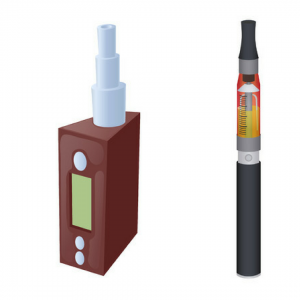 First, let’s understand…
First, let’s understand…
What Makes Vaping Such an Effective Tool to Quit Smoking?
In the psychology behind breaking any habit, you’ve learned that one of the most effective ways to break a habit is to replace it with a new one.
That’s precisely one of the reasons why vaping is such an effective way to quit smoking: It’s very similar behavior to smoking.
Plus, if you get an e-liquid with nicotine, you will satisfy your nicotine cravings as well (I highly recommend slowly phasing any nicotine out of your life, but more about that later).
But, before you start, you need to know:
The Right Way to Use Vaporizers / E-Cigarettes to Quit Smoking
Electronic cigarettes can be one of the best tools you can use to quit smoking.
And although it’s true that a considerable percentage of the toxins that are present in regular smoke isn’t present in the vapor that an electronic cigarette produces…
What most people don’t know is the following:
Some flavored e-liquids (e-liquid is the substance you use to vape and put in your vaporizer) contain unacceptable amounts of harmful/carcinogenic compounds.
These polluted e-liquids are most probably the cause in recent study findings that show that flavored e-liquids can cause damage to the cells and bacteria in your mouth:
- Study 1: flavored e-liquids promote oral disease by killing cells in your mouth that protect your body from dangerous bacteria (6);
- Study 2: flavored e-liquids promote oxidative stress and inflammatory responses in your mouth by causing DNA damage to periodontal cells (7).
If you’re looking for a healthy alternative to smoking, please stay away from untested and uncertified, flavored e-liquids.
You don’t want to be substituting one unhealthy habit for the other.
Now:
Which e-liquids should you use to minimize any health risks?
Any e-liquid which can prove that the following compounds are not present in it, through independent 3th-party lab-testing:
- Diacetyl;
- Acetyl propionyl;
These compounds are respiratory-tract irritants.
There are only a dozen e-liquid manufacturers which prove that they don’t have these compounds through 3th-party lab-testing, and you can find them in this article.
To make it easy on yourself, you could also get unflavored e-liquid. Because the compounds you want to avoid, are shown to be present most, if not only, in flavored e-liquids.
I still recommend always getting your e-liquid from a trusted source, whether it’s flavored or not. A trusted source is any source that has official certificates of independent 3th-party lab-testing of their e-liquids.
That’s the first step.
The second step is getting a vaporizer (e-cig, vape pen, or box mod with a tank), which re-creates the smoking experience, also called: Mouth-to-Lung vaping (MTL).
(If later you want to move on to more intense vaping styles like Direct Lung vaping, also called DTL, that’s perfectly ok. But it’s highly recommendable that you start with MTL vaping)
For this, you can find our top recommendations here:
Then there’s a fundamental rule you have to keep in mind while using your vaporizer if you want to minimize any health risks:
Make sure you vape at low voltage, wattage, and low-temperature settings.
Research done in 2016 found that high-voltage vaping produced significantly higher amounts of toxic compounds and toxicity than low-voltage vaping (8).
And although the researchers didn’t test high wattage vs. low wattage or high temp vs. low temp…
Keep in mind the following:
High voltage directly translates to high wattage and high temperature.
If you want to minimize your exposure to any toxins, please…keep your vaporizer at a low voltage/wattage/temperature setting.
If you have a fixed-wattage vaporizer like the Innokin Endura T18, there’s not much you can do to play with these settings…in such a case you need to make sure the average voltage, wattage or temperature is on the lower side.
You must be wondering now:
What is a safe, low-voltage, low-wattage, or low-temperature setting?
- Low voltage: below 4 volts;
- Low wattage: highly dependent on the resistance of your coil. You can calculate here what your max wattage can be if you fill in the resistance (in ohms) of your coil and 4 in the volt part;
- Low temperature: Below 392°F(200°C). When you go above this, you risk inhaling benzene and other toxic by-products (9). WAY less than with smoking mind you, but still…you might want to minimize any health risks.
So if I follow these 2 rules, will I stay 100% clear of any harm?
Unfortunately, no one can guarantee this.
All you can do is minimize any risks with the rules above.
Besides e-liquids, you could also vape:
CBD Vape-Oil
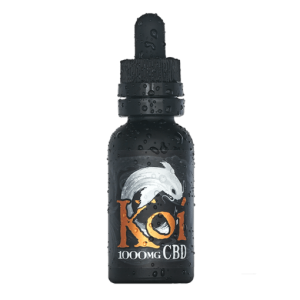 What if I told you that could replace smoking with vaping, but…
What if I told you that could replace smoking with vaping, but…
This is crazy:
Inhale something which is healthy for you?
Cannabidiol (CBD) is a cannabinoid found in the cannabis plant, and research over the past decades has shown that CBD has potent medicinal properties, including anti-inflammatory, anti-oxidant, and…
…anti-addiction properties!
So what happens when you vape CBD vape-oil?
Not only did you replace smoking with a healthy and similar alternative, but:
You’re now inhaling something which will help intervene with the neural circuits that are associated with your addictive behavior (smoking).
All you need to do, in addition to getting quality CBD vape oil from a trusted source, is get a quality e-liquid vape pen from a trusted source!
To vape this, you’ll need an e-liquid vaping setup or vape pen like the Innokin Endura T18 above.
The only potential risk you’re taking here is:
You’re not feeding your nicotine addiction like you would with e-liquids.
But this is precisely the benefit at the same time since nicotine is quite an unhealthy compound.
Maybe, all this vaping stuff, for whatever reason, doesn’t interest you.
And you’re looking for something completely different.
Are you out of luck now?
Nope.
You can still use…
Method 2: Use Nicotine Gums or Nicotine Patches to Quit Smoking
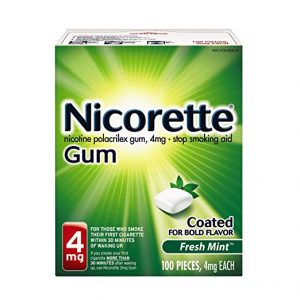 One part of the addiction to smoking comes from nicotine.
One part of the addiction to smoking comes from nicotine.
Nicotine is a highly addictive substance, partially because it acts as a stimulant in the low doses you absorb when smoking.
Nicotine gums and nicotine patches have been proven to be quite successful in helping smokers quit.
The two main reasons for this are:
- After years and years of daily nicotine, your body will keep craving nicotine for a certain amount of time after you’ve quit (it’s a highly addictive substance). And nicotine gums satisfy your body’s nicotine cravings, which in turn will result in a reduced need to smoke, and;
- By chewing on nicotine gum, you replace your old habit with a new one as well (like with vaping CBD oil).
But here’s the kicker:
Most smokers are not only addicted to nicotine, but usually even more so…addicted to the physical act of lighting a cigarette up and the physical act of inhaling and exhaling smoke, and a small moment for oneself.
Although chewing gum is also an oral activity, it won’t be the same as inhaling and exhaling something, and thus might not be the right alternative for you.
Vaping is much closer to smoking as an activity.
Now:
The one short-term pro of using nicotine gums or nicotine patches compared to CBD vape oil is that your body’s cravings for nicotine will be satisfied.
In the long term, however, you want to be completely clear of any nicotine.
Nicotine is associated with all sorts of health issues (10):
- Cardiovascular disorders;
- Respiratory disorders;
- Gastrointestinal disorders;
- Reproductive health issues;
- Oxidative stress, and many more.
If you go for the option of nicotine gums or nicotine patches, I highly recommend you start phasing them out slowly and maybe change it to regular gum in several months.
Even with the downsides though, nicotine gums or patches are still better for your health than smoking!
- Recommended nicotine gums – (Nicorette Nicotine Gums)
- Recommended nicotine patches – (NicoDerm Nicotine Patches)
Quit Smoking Weed With a Dry Herb Vaporizer
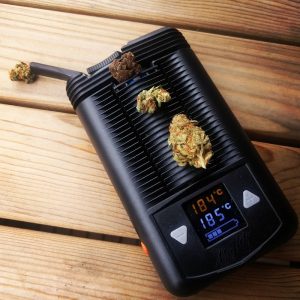 For all you herb smokers out there, let me tell you a quick personal story.
For all you herb smokers out there, let me tell you a quick personal story.
Since I was 16 I had been smoking weed on a very regular basis. And although I loved the effect, over the years, my body and especially my airways started to hate me for it:
- I was coughing more often;
- I had lots of mucus/phlegm in my throat/nose;
- My general condition was just not where it could be (I was playing a few different sports back then): I felt short of breath when performing strenuous physical activity…and;
- My general health just felt a bit off.
Also the longer I smoked, the more often my sessions would consist of me getting extremely lazy and just glued to the couch, feeling like all I could do was lie down and doze off (I was smoking with tobacco as well then).
That is:
Until I learned about vaping.
The moment I got my first vaporizer, I never looked back.
My health improved very quickly:
- The coughing disappeared;
- Mucus/phlegm disappeared, and;
- I just felt alive and vibrant in general.
Also, the effect of the herb completely changed.
Rather than having a sluggish, physically heavy and sedating effect, the effect of vaping pure herb is:
- Cleaner;
- More energetic, and;
- Subtler.
It rarely feels like getting hit by a truck (although you could produce this specific effect with a monster vaporizer like the VapeXhale Cloud EVO).
I must admit, using any tobacco with my herb, was also was a big culprit in these lethargic zombie-mode types of sessions…
But the added benefit of a vaporizer is: using pure herb is just SO much more comfortable with a vaporizer!
Just grind a little, put it in and vape it up.
Then there’s the benefit of needing much less herb to get medicated, which will result in a massive return on your investment in the long run.
Vaping weed simply is way more efficient than smoking it.
The bottom line is:
If you’re smoking weed, I highly recommend checking out a dry herb vaporizer and giving your airways and body their much-needed break.
Conclusion
In today’s post, you’ve learned the best and most proven ways to quit smoking.
You now know that quitting smoking is best approached from multiple angles.
First, to quit smoking, you want to do the right preparatory psychological work.
And then only, you will consider using a tool like a vape pen or nicotine gum to aid you in the process.
You’ve learned that regular e-liquid-based e-cigarettes are unhealthy and therefore not suited if you’re looking for a healthy alternative to smoking.
You’ve also learned the right way to use a vaporizer: vaping CBD oil.
And if you’re afraid that your nicotine addiction will make it too hard for you to quit, you’ve learned that nicotine gums and nicotine patches are a viable alternative to smoking, at least in the short term.
After today’s post, your chances of successfully quitting smoking have risen tenfold!
Scientific References:
- Tangney, J. P., Baumeister, R. F., & Boone, A. L. (2004). High Self-Control Predicts Good Adjustment, Less Pathology, Better Grades, and Interpersonal Success. Journal of Personality, 72(2), 271–324. https://doi.org/10.1111/j.0022-3506.2004.00263.x
-
Gardner, B., & Lally, P. (2012). Does intrinsic motivation strengthen physical activity habit? Modeling relationships between self-determination, past behaviour, and habit strength. Journal of Behavioral Medicine, 36(5), 488–497. https://doi.org/10.1007/s10865-012-9442-0
-
Lally, P., & Gardner, B. (2013). Promoting habit formation. Health Psychology Review, 7(sup1), S137–S158. https://doi.org/10.1080/17437199.2011.603640
- Max-Planck-Gesellschaft. (2008, April 15). Decision-making May Be Surprisingly Unconscious Activity. ScienceDaily. Retrieved October 30, 2021 from www.sciencedaily.com/releases/2008/04/080414145705.htm
-
Bouton, M. E. (2000). A learning theory perspective on lapse, relapse, and the maintenance of behavior change. Health Psychology, 19(1, Suppl), 57–63. https://doi.org/10.1037/0278-6133.19.suppl1.57
-
Ji, E. H., Sun, B., Zhao, T., Shu, S., Chang, C. H., Messadi, D., . . . Hu, S. (2016). Characterization of Electronic Cigarette Aerosol and Its Induction of Oxidative Stress Response in Oral Keratinocytes. PLOS ONE, 11(5), e0154447. https://doi.org/10.1371/journal.pone.0154447
-
Sundar, I. K., Javed, F., Romanos, G. E., & Rahman, I. (2016). E-cigarettes and flavorings induce inflammatory and pro-senescence responses in oral epithelial cells and periodontal fibroblasts. Oncotarget, 7(47), 77196–77204. https://doi.org/10.18632/oncotarget.12857
-
Leigh, N. J., Lawton, R. I., Hershberger, P. A., & Goniewicz, M. L. (2016). Flavourings significantly affect inhalation toxicity of aerosol generated from electronic nicotine delivery systems (ENDS). Tobacco Control, 25(Suppl 2), ii81–ii87. https://doi.org/10.1136/tobaccocontrol-2016-053205
-
Gieringer, D. H. (2001). Cannabis “Vaporization.” Journal of Cannabis Therapeutics, 1(3–4), 153–170. https://doi.org/10.1300/j175v01n03_10
-
Mishra, A., Chaturvedi, P., Datta, S., Sinukumar, S., Joshi, P., & Garg, A. (2015b). Harmful effects of nicotine. Indian Journal of Medical and Paediatric Oncology, 36(01), 24–31. https://doi.org/10.4103/0971-5851.151771